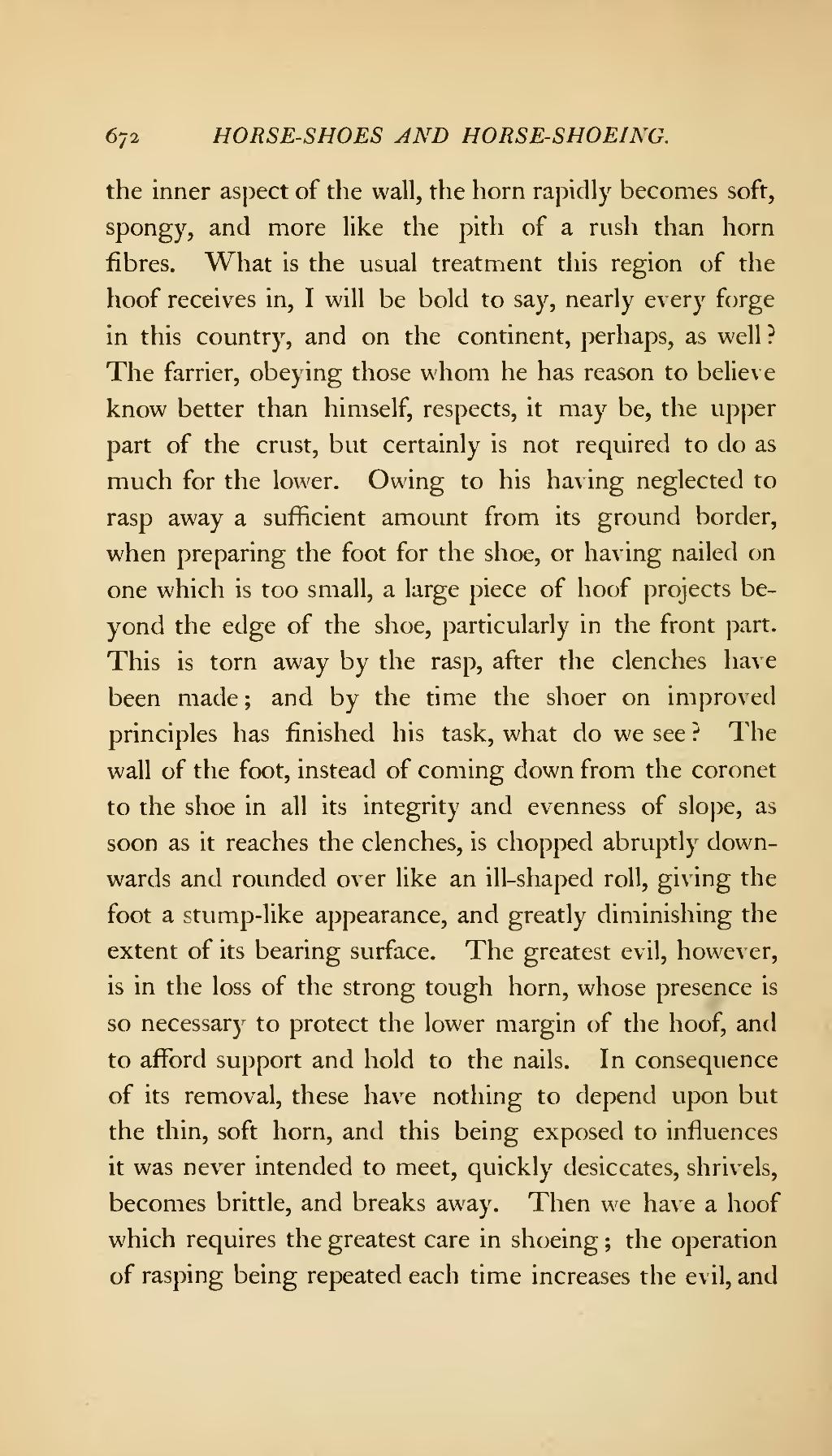the inner aspect of the wall, the horn rapidly becomes soft, spongy, and more like the pith of a rush than horn fibres. What is the usual treatment this region of the hoof receives in, I will be bold to say, nearly every forge in this country, and on the continent, perhaps, as well? The farrier, obeying those whom he has reason to believe know better than himself, respects, it may be, the upper part of the crust, but certainly is not required to do as much for the lower. Owing to his having neglected to rasp away a sufficient amount from its ground border, when preparing the foot for the shoe, or having nailed on one which is too small, a large piece of hoof projects beyond the edge of the shoe, particularly in the front part. This is torn away by the rasp, after the clenches have been made; and by the time the shoer on improved principles has finished his task, what do we see? The wall of the foot, instead of coming down from the coronet to the shoe in all its integrity and evenness of slope, as soon as it reaches the clenches, is chopped abruptly downwards and rounded over like an ill-shaped roll, giving the foot a stump-like appearance, and greatly diminishing the extent of its bearing surface. The greatest evil, however, is in the loss of the strong tough horn, whose presence is so necessary to protect the lower margin of the hoof, and to afford support and hold to the nails. In consequence of its removal, these have nothing to depend upon but the thin, soft horn, and this being exposed to influences it was never intended to meet, quickly desiccates, shrivels, becomes brittle, and breaks away. Then we have a hoof which requires the greatest care in shoeing; the operation of rasping being repeated each time increases the evil, and
